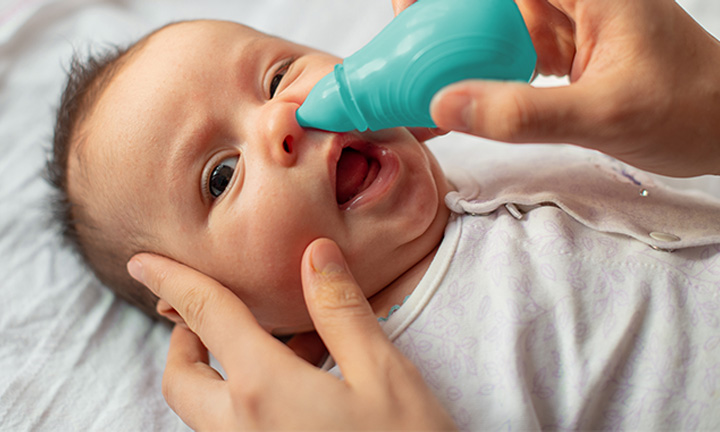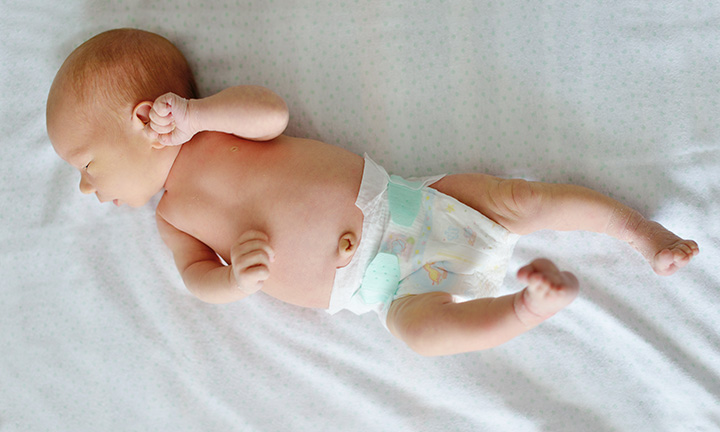
Jaundice in Newborns: What It Means & What to Do Next


Noticing a yellow tint to your little one’s skin or eyes? It’s natural to feel concerned but take a breath: newborn jaundice is very common and often harmless. In many cases, it’s simply your baby’s body adjusting after birth.
Here’s what you need to know:
This guide breaks down everything you need to know about jaundice in babies—from the different types (like physiological jaundice, breast milk jaundice, and breastfeeding jaundice) to causes, treatments, and when to seek help.
What Is Jaundice?
Jaundice
or hyperbilirubinemia is a common condition in newborns where a baby’s skin and the whites of their eyes appear yellow. This happens when bilirubin levels in the baby’s blood are high. Bilirubin is a yellow substance made when red blood cells break down. Since your little one’s liver isn’t fully developed yet, it may not be able to process bilirubin quickly enough, leading to a buildup in the body.
If you’re wondering, “How common is jaundice in newborns?” Well, it’s very common. Up to 60 percent of full-term babies and as many as 80% of premature babies develop jaundice during their first week of life.
In many cases, jaundice appears a couple of days after birth and fades away on its own within two to three weeks. But if it shows up earlier than 24 hours after birth, gets worse instead of better, or lasts longer than expected, your baby’s healthcare provider may want to check for other possible causes.
Types of Newborn Jaundice
There are several types of jaundice that newborn babies may experience. Some are common and resolve on their own, while others may be associated with feeding or medical issues. Here's what to know:
Signs and Symptoms of Jaundice in Newborns
One of the earliest signs of jaundice in babies is a yellowish tint to the skin, often first seen on the face. This baby yellow color may gradually spread to the chest, belly, arms, and legs. You might also notice a newborn’s yellow eyes, where the whites of the eyes take on a yellow hue. Let your baby’s healthcare provider know if you notice any of these signs.
In babies with darker skin tones, the yellowing may be less noticeable. Instead of focusing solely on skin tone, check areas like the whites of your baby’s eyes, the inside of their mouth, and the palms of their hands or soles of their feet. These areas can give you a clearer clue.
If you notice any of these symptoms of jaundice in newborns, it’s a good idea to mention them to your little one’s healthcare provider:
These neonatal jaundice symptoms are often mild and resolve on their own. However, it’s essential to monitor their progress.
Signs That Jaundice May Be Getting Worse
In many babies, jaundice will start to fade within the first two to three weeks. But there are times when it can become more serious. It’s helpful to know when to worry about jaundice in babies and when it’s time to seek urgent care.
These may be signs of very high bilirubin in newborns, which in rare cases may lead to a serious complication called kernicterus, a type of brain damage caused by dangerously high bilirubin levels.
If you’re unsure, trust your instincts. It’s always okay to reach out to your baby’s healthcare provider, especially if the jaundice seems to be getting worse or your baby’s behavior suddenly changes.
What Causes Jaundice in Newborns and Older Babies?
There are several reasons your newborn with jaundice may have elevated bilirubin levels, and certain factors may increase the likelihood of this condition. Here are some possible causes of jaundice in babies:
Diagnosis
Your baby’s healthcare provider will begin checking for signs of jaundice while you're still in the hospital. Since bilirubin levels in infants typically peak between three and five days after birth, it's important to have your baby rechecked during that time if they’ve already gone home.
To start, your provider may estimate your newborn’s bilirubin level by gently placing a probe on your baby’s forehead. This test measures the transcutaneous bilirubin (TcB) level through the skin. If this reading is high, a follow-up blood test—called total serum bilirubin (TSB)—is done by pricking your baby’s heel to collect a small sample.
Newborn Baby Jaundice Level Chart
The American Academy of Pediatrics uses a specific newborn baby jaundice level chart to help determine whether treatment is needed. The chart compares your baby’s TSB level to their age in hours.
This bilirubin levels chart is used to evaluate the risk and guide the next steps. A high bilirubin level in newborns doesn’t always mean there’s a serious problem, but it does signal the need for monitoring or possible treatment. Your newborn’s healthcare provider will interpret the results based on their gestational age, how many days old they are, health status, and whether any risk factors are present (such as Rh incompatibility).
Tracking your baby's color is just the beginning—keep an eye on their growth, too. Use our Baby Growth Chart Calculator to track your little one's height, weight, and head size as they grow healthy and strong.
Jaundice Treatment and Recovery
If your baby’s healthcare provider determines that treatment is needed, there are several safe and effective newborn jaundice treatments available. The approach depends on your baby’s bilirubin levels, age, and overall health.
How Long Does Jaundice Last?
You may be wondering, “How long does jaundice last in newborns?” The answer depends on what’s causing it and whether your little one is receiving treatment. Your baby’s healthcare provider can provide you with the most accurate timeline based on their bilirubin levels and overall health.
In most cases of physiological jaundice, the common kind of jaundice goes away within two to three weeks, especially if your baby is breastfeeding. If your baby is formula-fed, it may clear up sooner, typically by the time your baby is around 2 weeks old.
If your little one still looks yellow after three weeks, it’s a good idea to follow up with their healthcare provider. They may want to check for other underlying causes or consider additional care. However, in some cases, breast milk jaundice can last a couple of months.
Potential Complications Associated With Jaundice
In most cases, jaundice is mild and goes away without any lasting effects. But when bilirubin levels in newborns get too high and aren’t treated, there is a small risk of serious complications. Fortunately, these are rare, especially when jaundice is monitored and treated early.
While kernicterus sounds scary, it’s extremely uncommon when jaundice is properly treated. Keeping your baby’s healthcare provider informed and attending follow-up visits can help prevent complications and support a smooth recovery.
FAQS AT A GLANCE
Most cases are mild and resolve on their own. But if bilirubin levels get too high and aren’t treated, jaundice can lead to serious complications. Always consult your baby’s healthcare provider if you notice worsening symptoms or persistent yellowing.
The Bottom Line
Jaundice is very common in newborn babies, and in most cases, it clears on its own within a few weeks. Still, it’s important to keep an eye out for any signs that it’s getting worse or not going away. Let your baby’s healthcare provider know if you’re ever unsure, especially if the yellowing spreads, your little one seems overly sleepy, or symptoms last beyond a couple of weeks.
Early diagnosis and simple treatments, such as phototherapy, often resolve the issue quickly, helping to prevent complications. With your provider’s guidance, things should soon return to normal, and you can focus on bonding with your little one during these early days.
Turn your Pampers diapers and wipes into rewards. Download the Pampers Rewards app today and start earning with every change!
- American Academy of Pediatrics. Caring for Your Baby and Young Child: Birth to Age 5, 6th ed. (New York: Bantam Books, 2014).
- American College of Obstetricians and Gynecologists. Your Pregnancy and Childbirth: Month to Month, 6th ed. (Washington, DC: American College of Obstetricians and Gynecologists, 2015).
- HealthyChildren.org. “Jaundice.”
- Kids Health. “Jaundice.”
- Kids Health Humana Louisiana. “Jaundice.”
- La Leche League International. “Jaundice.”
- March of Dimes. “Newborn Jaundice.”
- Mayo Clinic. Infant Jaundice.”
- NCBI. “Vacuum Extraction and Neonatal Jaundice.”
Read more about Baby
Related Articles
Join a World of Support
through Pregnancy and Parenthood.
TRACK WITH TOOLS
LEARN WITH EXPERTS
GET REWARDED














